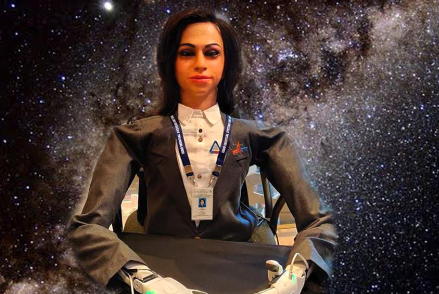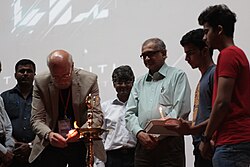Blog Credit : Trupti Thakur
Image Courtesy : Google
VyoMitra In 2025
In 2025, thVe Indian Space Research Organisation (ISRO) plans to launch the Gaganyaan mission, featuring an uncrewed robot called Vyomitra. This robot, known as a half-humanoid, is designed to help with tasks in space.
What Are Humanoids?
Humanoids, or half-humanoids, are robots that look and move somewhat like humans. Vyomitra has arms, a face, and a neck that can move. These robots are mainly used to perform repetitive or dangerous tasks in space, protecting astronauts so they can focus on important scientific work.
Why Is ISRO Sending Vyomitra?
The Gaganyaan mission will test Vyomitra’s abilities as a technology prototype. Vyomitra will operate the controls, monitor systems inside the spacecraft, and communicate with mission control on Earth. This will help ISRO gather important information about how space travel affects humans.
How Is Vyomitra’s Skull Designed?
Vyomitra’s skull is made from a special lightweight aluminum alloy called AlSi10Mg. This material is strong, flexible, and can withstand heat and mechanical stress. The skull is about 200mm x 200mm in size and weighs only 800 grams, designed to endure the strong vibrations during a rocket launch.
How Was Vyomitra’s Skull Made?
The skull was created using Additive Manufacturing (AM), similar to 3D printing. This method allows for complex designs that reduce weight but maintain strength, which is very important for space missions. Low payload weight is crucial in space travel because heavier loads require more fuel and larger rockets. Using lightweight materials like AlSi10Mg makes the mission more efficient and cost-effective.
About ISRO
ISRO, the Indian Space Research Organisation, was founded in 1969. It launched its first satellite, Aryabhata, in 1975. ISRO developed the Polar Satellite Launch Vehicle (PSLV), successfully launching over 300 foreign satellites. In 2014, ISRO’s Mars Orbiter Mission (Mangalyaan) made India the first Asian country to reach Mars. ISRO also developed the NavIC system for regional satellite navigation. ISRO’s headquarters are in Bengaluru, and it operates from several centers across India.
What is Vyomitra?
Vyomitra is an AI-based humanoid developed by ISRO for space missions. It was first introduced in 2020. Vyomitra is designed to help astronauts by performing tasks and monitoring life systems. Its name means “space friend” in Sanskrit. Made with motors and sensors, Vyomitra can mimic human movements and gestures. It can conduct experiments and even simulate human emotions, helping prepare for future crewed missions to the moon and Mars.
Overview
Vyommitra (Sanskrit: Vyōma “space”, Mitra “friend”) is a female humanoid robot designed for space travel. She was designed at the Vikram Sarabhai Space Center in Thiruvananthapuram, Kerala and developed by the Indian Space Research Organisation (ISRO) to function aboard the spacecraft Gaganyaan, a crewed orbital spacecraft. Vyommitra was first unveiled on 22 January 2020 at the Human Spaceflight and Exploration Symposium in Bengaluru.
Built mostly out of an aluminium alloy to withstand high pressure and Vibrations, She will accompany Indian astronauts on space missions and be a part of uncrewed experimental Gaganyaan missions before the crewed flights. It is presumed that she will take her first flight on the Gaganyaan G-2 unmanned mission in 2025.
Objectives and abilities
The robot is part of the ISRO’s aim to substitute animals with humanoid robots on experimental missions, with the goal of better understanding the effects of prolonged exposure to radiation and microgravity environments on the human body during space travel.
Vyommitra can mimic human activity, recognise various humans, and respond to their queries in both Hindi and English. The robot is expected to be aboard uncrewed Gaganyaan missions to conduct experiments in microgravity environments and monitor module parameters. In crewed missions, she will also support astronauts by simulating human functions. She can handle environment control and life support systems, perform switch panel operations, and give environmental air pressure change warnings.
The prototype models of Vyommitra have finished trials, and the engineering models are undergoing trials. The Vyommitra flight model to be used in the Gaganyaan missions is also being built by the ISRO.
Union Minister of State, Jitendra Singh, said in early February 2024 that the uncrewed Vyommitra mission is scheduled for the third quarter of 2024, while the crewed mission is scheduled for launch in 2025.
Blog By : Trupti Thakur

30
AugVyoMitra In 2025
Aug 30, 2024Recent Blog
Quantum Gravity Gradiometer PathFinderApr 28, 2025
The TechKriti 2025Apr 26, 2025
India’s First Quantum Computing VillageApr 24, 2025
India’s Achievement In QKDApr 22, 2025
The V2G TechnologyApr 21, 2025




